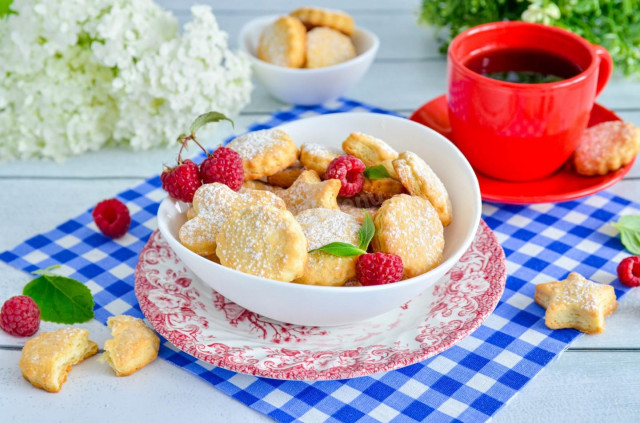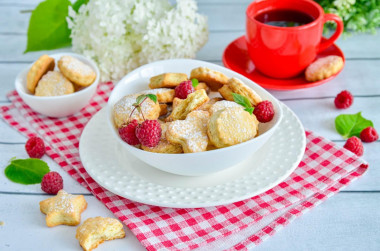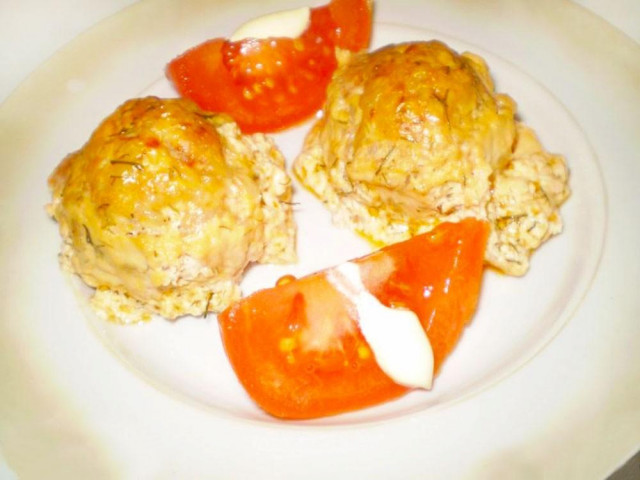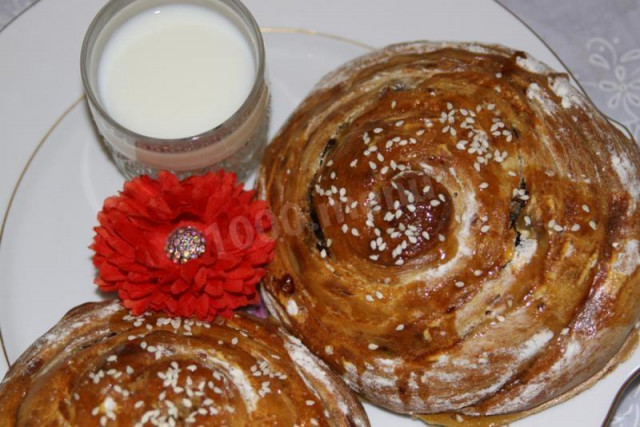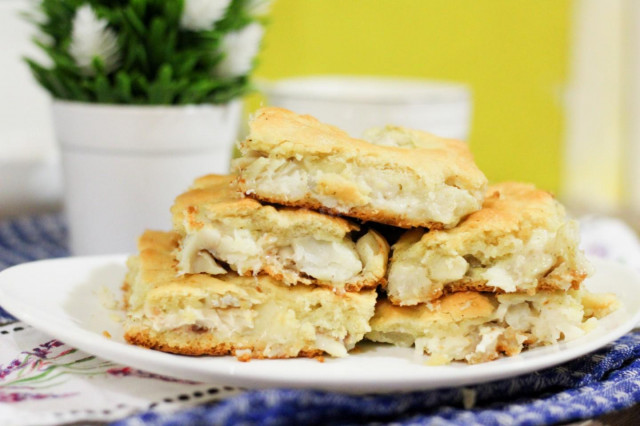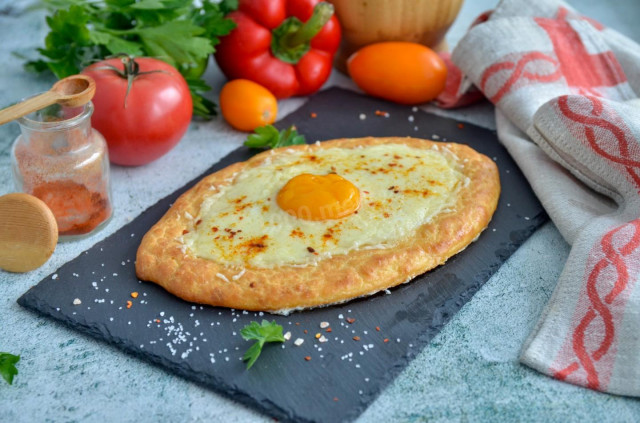Composition / ingredients
Step-by-step cooking
Step 1:

How to make cookies on sour cream and margarine? Prepare the products. I do not advise replacing margarine with butter — it is he who, due to the content of vegetable fats, will give the dough the desired puff structure. Plus margarine is cheaper.
Step 2:

Put the margarine in a saucepan with a thick bottom and melt it on the stove over the lowest heat.
Step 3:
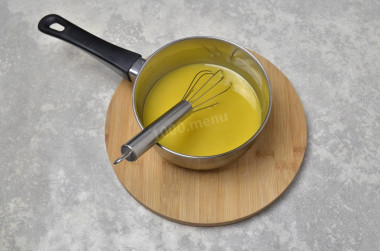
Remove the saucepan from the stove and immediately pour sugar into the melted margarine. Mix it quickly — the sugar will almost completely dissolve in the warm mass. The amount of sugar, by the way, you can change depending on your taste. And be sure to add a pinch of salt to balance the taste.
Step 4:
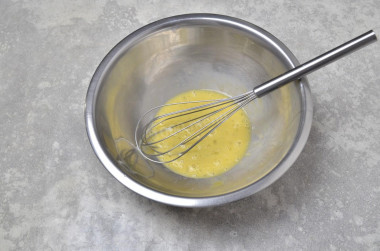
In a deep bowl, beat the egg. Be sure to wash the eggs before use, as even the seemingly clean shell may contain harmful bacteria. It is best to use food detergents and a brush. Lightly whisk it with a whisk.
Step 5:

Pour margarine with sugar into a bowl to the egg, add sour cream. Mix everything until smooth. Pour in the soda, stir again.
Step 6:

I did everything with a regular hand whisk, the mixer in this recipe is completely unnecessary.
Step 7:
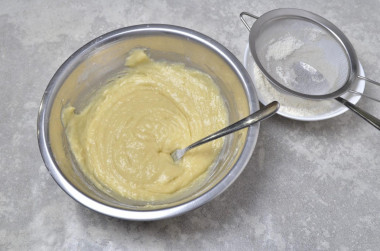
Start sifting the flour into the liquid part in portions, kneading the dough well after each addition. Here I have already stirred with a fork.
Step 8:
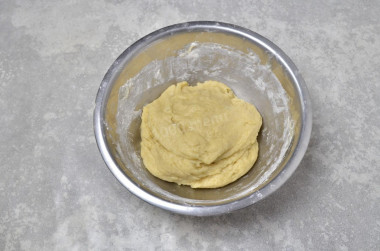
When it becomes difficult to stir with a fork, start kneading with your hands. Be prepared for the fact that the flour may go more or less than indicated in the recipe. Focus on the consistency of the dough — it should gather in a lump, stop sticking to your hands, but at the same time remain soft. It took me a little more flour. Wrap the finished dough in a bag and put it in the freezer for half an hour — the margarine will harden and it will become easier to work with it.
Step 9:
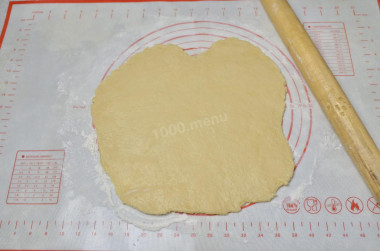
After the prescribed time, take out the dough, cut it in half, put one half on the work surface, remove the other again, but in the refrigerator. Roll out the dough with a rolling pin into a 0.5 cm thick layer. I added a little flour so that it wouldn't stick.
Step 10:
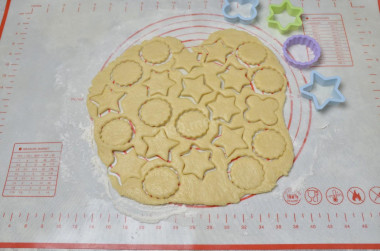
Use a cookie cutter to cut out cookies from the dough. If there are no molds, then just a glass. It will be even easier to cut the layer into lozenges.
Step 11:
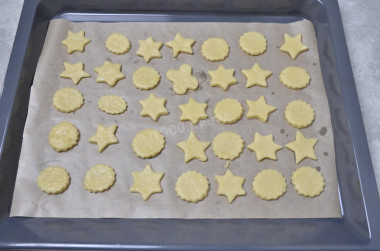
Cover the baking sheet with baking paper. Put the cookies on it. The remains of the dough are again blinded, rolled out and cut. I have the whole portion of half the dough just fit on one baking sheet.
Step 12:

Bake cookies in the oven, preheated to 200 ° C, 10-15 minutes, focus on the features of your oven. It should be slightly gilded.
Step 13:

The finished cookies can be sprinkled with powdered sugar. Serve with tea, cocoa, coffee or milk. It is very tasty in a warm form. Enjoy your meal!
All the secrets of baking shortbread dough, why it turns out dry, hard or tasteless and how to avoid it, read the article about crumbly and tender shortbread dough .
Keep in mind that everyone's ovens are different. The temperature and cooking time may differ from those specified in the recipe. To make any baked dish successful, use the useful information about the features of ovens !
Is it possible to replace baking powder with soda, how to add them correctly so that the baking is lush, how to avoid an unpleasant soda taste and much more, read the article "Baking powder or baking soda - which is better?"
Be prepared for the fact that flour may need more or less than indicated in the recipe. Focus not on the amount of flour, but on the desired consistency of the dough. To avoid mistakes, read about flour and its properties!
Caloric content of the products possible in the composition of the dish
- Sour cream of 30% fat content - 340 kcal/100g
- Sour cream of 25 % fat content - 284 kcal/100g
- Sour cream with 20 % fat content - 210 kcal/100g
- Sour cream of 10% fat content - 115 kcal/100g
- Sour cream - 210 kcal/100g
- Chicken egg - 157 kcal/100g
- Egg white - 45 kcal/100g
- Egg powder - 542 kcal/100g
- Egg yolk - 352 kcal/100g
- Ostrich egg - 118 kcal/100g
- Whole durum wheat flour fortified - 333 kcal/100g
- Whole durum wheat flour, universal - 364 kcal/100g
- Flour krupchatka - 348 kcal/100g
- Flour - 325 kcal/100g
- Granulated sugar - 398 kcal/100g
- Sugar - 398 kcal/100g
- Table margarine - 720 kcal/100g
- Cream margarine - 720 kcal/100g
- Milk margarine - 743 kcal/100g
- Low-fat margarine - 384 kcal/100g
- Sandwich margarine - 688 kcal/100g
- Margarine for baking - 675 kcal/100g
- Margarine dietary - 366 kcal/100g
- Margarine bold 40% - 415 kcal/100g
- Margarine - 720 kcal/100g
- Salt - 0 kcal/100g
- Baking soda - 0 kcal/100g

